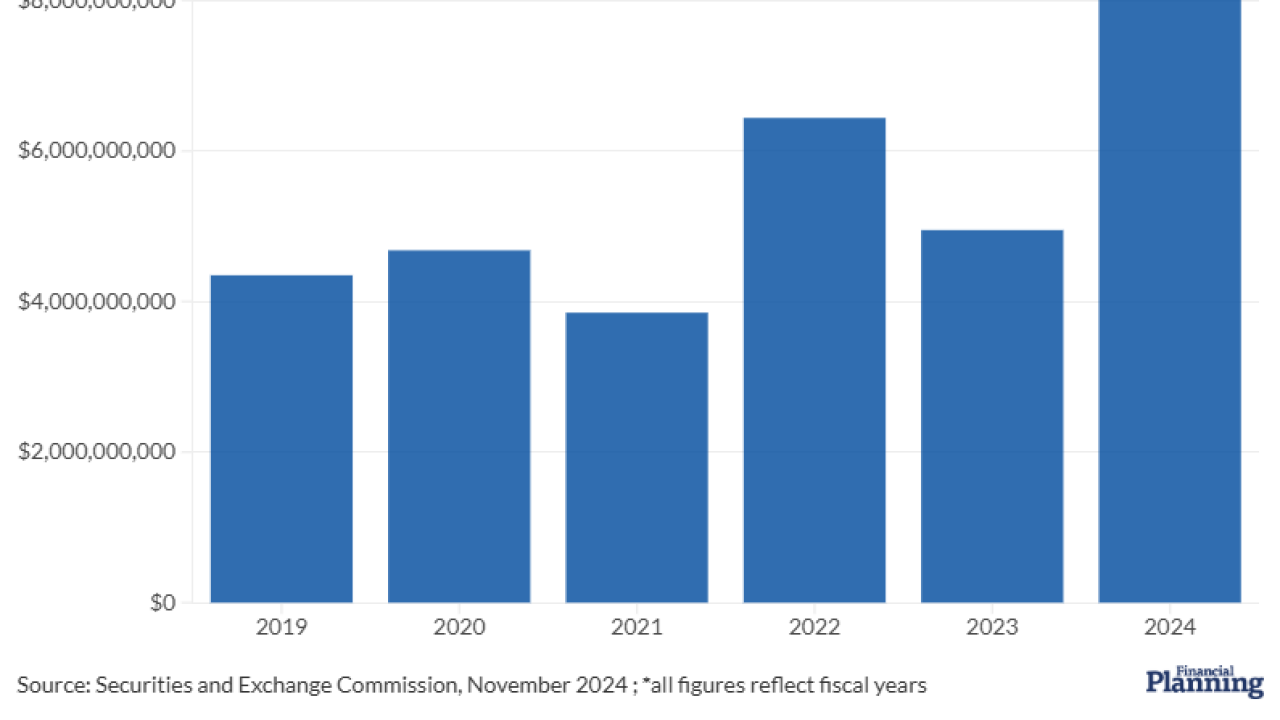The U.S. equity markets have been underperforming for clients and other investors, and in a look back at last year, it was worse for those focused on dividends. If you had to explain the recent uninspired performance in a single word, it would be “energy.”

While the S&P 500 lost 0.73%, a negligible decline, the energy sector tumbled 23.55% according to figures from S&P Dow Jones Indices. In fact, if your clients held the S&P excluding its energy stocks, they would have been up 1.37% for the year.
That 30 of the 40 stocks in the S&P 500 energy sector pay dividends helps explain why payers suffered an average decline of 3.08% last year while non-payers fell 1.27% on average. And the year’s two best performers in the index were non-payers: Netflix (up 134%) and Amazon (up 118%).
Of course not everything was bad for clients who invest in stocks that pay dividends. Dividends provided the only gains for the S&P 500; the index’s total return was 1.38% Cash payments on the benchmark rose 10% in 2015, marking the fifth consecutive year of double-digit percentage increases.
Nevertheless, few dividend investors buy the S&P 500 for income. At the end of 2015, the indicated yield (what clients can expect if there are no increases or decreases ahead) was a mere 2.16%.
None of the four largest ETFs that focus on dividend growth bested the total return of the index. Ironically, the fund with the largest position in energy stocks had the best return, while the ETF with lowest position in oil and gas came in next to last. Both are Vanguard portfolios.
XOM 'MERELY SLIDES'
According to Morningstar, which is the source for all the ETF performance data cited, the Vanguard High Dividend Yield ETF (VYM) had a total return of 0.28% last year while holding 10.81% of its assets in energy issues. A closer look at the fund’s holdings shows that Exxon Mobil (XOM), its second-largest position, accounted for fully 4.1% of the portfolio.
While energy tumbled, XOM merely slid. The integrated oil and gas giant has refining operations that do better when crude prices decline, partly offsetting its exploration and production losses. Its stock also has a decent yield, so Exxon Mobil finished the year with a total return of -12.57%. That put it way ahead of the integrated oil and gas category, which had a total return of -20.92%.
VYM is highly diversified with more than 400 holdings. XOM was second on its list, but the next-largest energy holding was 12th and the subsequent one was 29th. Diversification is good protection. That lesson was reinforced by the performance of the Vanguard Dividend Appreciation ETF (VIG). Although its 1.32% energy position was extremely modest, the fund holds fewer than 200 positions, meaning each stock has a larger effect on performance. The ETF’s 2015 total return was -1.95%
The iShares Dow Jones Select Dividend ETF (DVY) and the SPDR S&P Dividend ETF (SDY) hold about 100 positions each. That makes them less diversified than the two Vanguard products. But SDY requires 20 years of annual dividend increases, while DVY looks for only a five-year overall positive dividend growth record. While DVY does well when its holdings are flush with cash, the shorter dividend records of these stocks could make them quicker to cut back on shareholder payments when times get tough. Companies in SDY would probably think twice.
What’s more, DVY had 9.56% of its assets in energy, and its total return for the year was -2.07%. SDY returned -0.73% in 2015, with 4.67% of its portfolio in energy.
Advisors who have clients in dividend ETFs should remind them that, over the long term, equities that pay dividends have outperformed those that don’t. Morningstar reports that between 1927 and 2014, stocks that pay dividends outperformed those that don’t by 0.7 percentage points annualized. But nothing works every year.
Read more:





